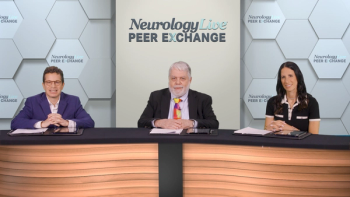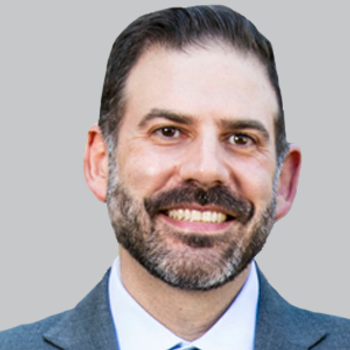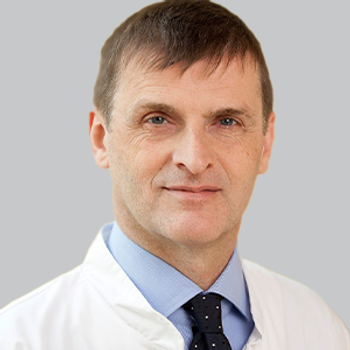
Dosing Begins for Phase 1 Study of Cell Therapy CK0803 in ALS
The 2-part study is intended to first establish safety and tolerability of multiple doses of CK0803, followed by efficacy analyses on several known ALS outcome measures.
According to an announcement from Cellenkos, the first patient has been dosed in its phase 1 safety run-in study assessing its investigational T regulatory (Treg) cell therapy CK0803 in amyotrophic lateral sclerosis (ALS).1
Also known as REGALS (NCT05695521), the phase 1 study includes a safety run-in study of 6 individuals with ALS, followed by a phase 1b randomized comparative trial with in an additional 60 patients with the disease. The double-blind portion consists of 2 stages, each including 30 patients, with a safety rule applied after stage 1 that allows for early termination of the study. The phase 1 study will be geared to establish safety and tolerability of multiple doses of CK0803 in ALS, while the phase 1b portion will provide preliminary efficacy data on the agent.
"The dosing of the first patient marks an exciting milestone for our company. The initiation of this study of CK0803 is an important achievement that brings us closer to delivering a potential new treatment which may have a life-changing impact for ALS," Tara Sadeghi, chief operating officer, Cellenkos, said in a statement.1 "ALS is a devastating disease with no cure, and we believe that CK0803 has the potential to provide a much-needed treatment option for patients. We are enthusiastic to move forward with this trial and to further explore the potential of CK0803 in ALS and other neurodegenerative diseases."
CK0803 is a novel allogenic cell therapy consisting of Tregs that is derived from clinical-grade umbilical cord blood units and manufactured using Cellenkos’ proprietary CRANE process. Doses of the agent, which require no HLA or ABO matching, can be manufactured from a single umbilical cord unit, where the final cryopreserved product is readily available for use, at the point of care. In the study, induction dosing of CK0803 includes 1 infusion every 7 days for 4 doses, while consolidation dosing includes 1 infusion every 28 days for 5 doses.
In the phase 1b study, investigators will focus on clinical outcomes such as survival time and change in ALS Functional Rating Scale-Revised (ALSFRS-R), as well as secondary end points of neurofilament light chain levels in serum and cerebrospinal fluid over time. Other secondary outcomes include handheld dynamometer, a measure of muscle strength, and ventilation assistance-free survival.
"We are excited to participate in this important study of this novel allogeneic Treg cell product in patients with ALS," principal investigator Neil Shneider, MD, PhD, associate professor of neurology, and director, Eleanor and Lou Gehrig ALS Center, Columbia University, said in a statement.1 "Promising data from 6 ALS patients previously treated with allogeneic cord blood Treg cells through an expanded access program at our Center supports the clinical development of CK0803, and we are grateful to Cellenkos for their commitment to applying their technology to ALS."
Cell therapies that act on Treg dysfunction have become increasingly popular in recent years, with several companies dedicated to developing these agents for ALS. In early 2022, notable data was published in Neurology describing the safety and potential efficacy of combined Tregs with subcutaneous interleukin (IL)-2 in patients with ALS. Using a small cohort of 8 individuals, a majority of patients (n = 6) showed slow to no disease progression, while the other rapid progressors (n = 2) demonstrated elevated markers of oxidative stress and inflammation, potentially delineating responsiveness to therapy.2
In multiple diseases, Tregs lose their suppressive function and neuroprotective capabilities. In patients with ALS, previous research has shown reductions in the expression of the Treg master transcription factor FOXP3, which correlated with increased burden of disease and rate of disease progression.3 Treg treatments project to be popular topics of discussion within the ALS research and drug development landscape in the coming years.
REFERENCES
1. Cellenkos announces first patient dosed with CK0803 cell therapy for treatment of amyotrophic lateral sclerosis. News releasee. May 2, 2023. Accessed May 3, 2023. https://www.prnewswire.com/news-releases/cellenkos-announces-first-patient-dosed-with-ck0803-cell-therapy-for-treatment-of-amyotrophic-lateral-sclerosis-301812682.html
2. Thonhoff JR, Berry JD, Macklin EA, et al. Combined regulatory T-lymphocyte and IL-2 treatment is safe, tolerable, and biologically active for 1 year in persons with amyotrophic lateral sclerosis. Neurology. 2022;9(6). doi:10.1212/NXI.00000000000200019.
3. Beers DR, Zhao W, Wang J, et al. ALS patients’ regulatory T lymphocytes are dysfunctional, and correlate with disease progression rate and severity. JCI Insight. 2017;2(5):e89530. doi:10.1172/jci.insight.89530
Newsletter
Keep your finger on the pulse of neurology—subscribe to NeurologyLive for expert interviews, new data, and breakthrough treatment updates.








































